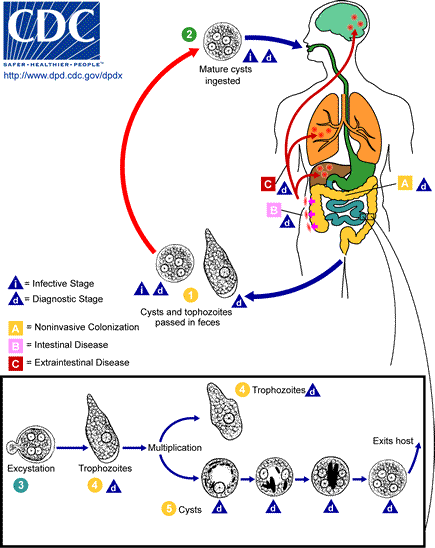Datei:Entamoeba histolytica Amebiasis LifeCycle.gif
Entamoeba_histolytica_Amebiasis_LifeCycle.gif (435 × 548 Pixel, Dateigröße: 28 KB, MIME-Typ: image/gif, 0,2 s)
Dateiversionen
Klicke auf einen Zeitpunkt, um diese Version zu laden.
| Version vom | Vorschaubild | Maße | Benutzer | Kommentar | |
|---|---|---|---|---|---|
| aktuell | 16:26, 29. Apr. 2006 |  | 435 × 548 (28 KB) | Patho | {{Information| |Description= Amebiasis [Entamoeba histolytica] Life Cycle of Entamoeba histolytica Cysts and trophozoites are passed in feces . Cysts are typically found in formed stool, whereas trophozoites are typically found in diarrheal stool. |
Dateiverwendung
Die folgenden 4 Seiten verwenden diese Datei:
Globale Dateiverwendung
Die nachfolgenden anderen Wikis verwenden diese Datei:
- Verwendung auf cs.wikipedia.org
- Verwendung auf da.wikipedia.org
- Verwendung auf he.wikipedia.org
- Verwendung auf hu.wikipedia.org
- Verwendung auf id.wikipedia.org
- Verwendung auf pt.wikipedia.org
- Verwendung auf sv.wikipedia.org

